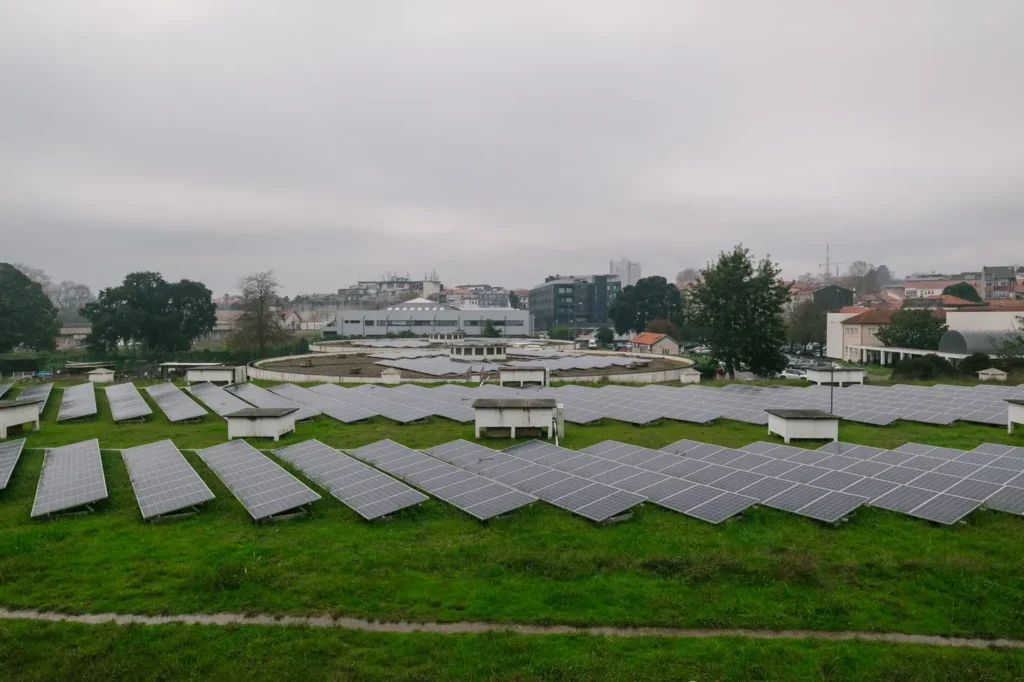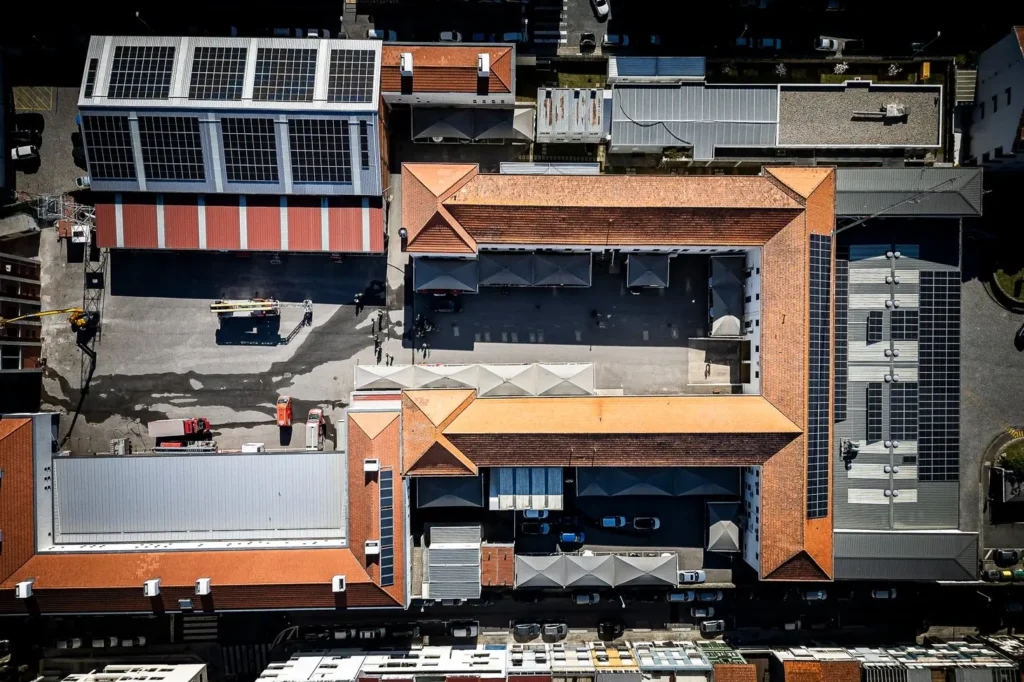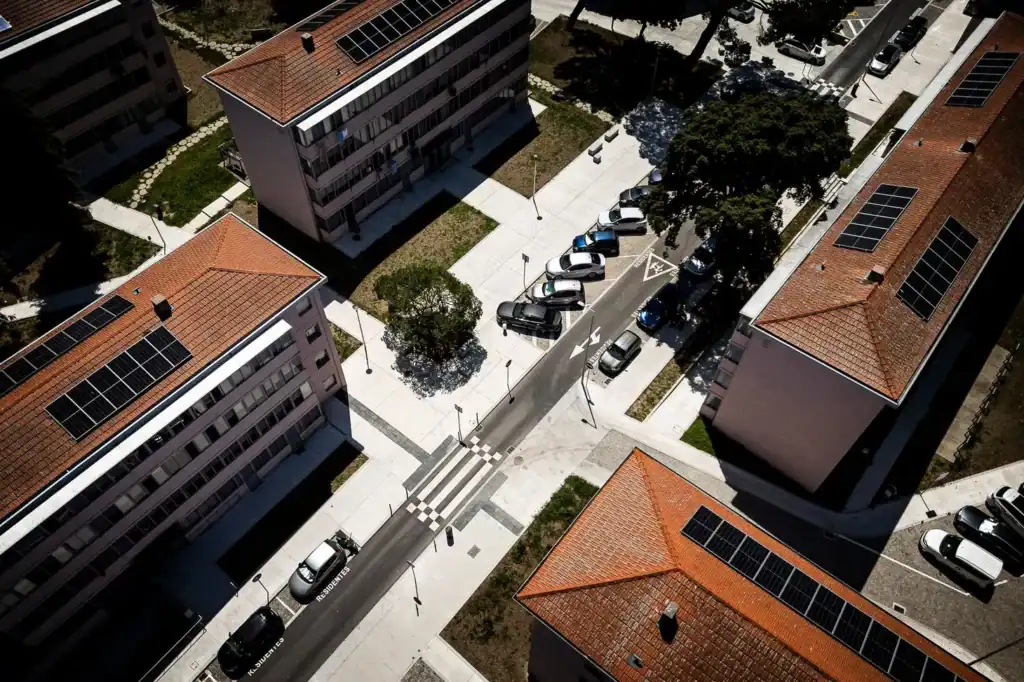The park was implemented in 2018 with an installed capacity of 454kWp, which allows it to be self-sufficient on sunny days. As well as powering all the campus buildings and the electric vehicle park, it is also able to trade energy resulting from surplus production.
Consisting of 1228 solar panels, they were installed on the roof of the three existing water reservoirs and represent a huge step forward in the economic sustainability of the company and the environmental sustainability of the city of Porto.



